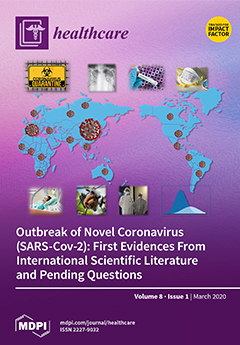Background: The evolution of names, from “medical informatics” to “connected health”, implies that the evolvement of technology in health care has been shifted from technology-oriented to healthcare-oriented implementation. Connected healthcare, a healthcare platform of remote monitoring and self-management through technological measures, is
[...] Read more.
Background: The evolution of names, from “medical informatics” to “connected health”, implies that the evolvement of technology in health care has been shifted from technology-oriented to healthcare-oriented implementation. Connected healthcare, a healthcare platform of remote monitoring and self-management through technological measures, is suggested to contribute to the efficiency, cost-effectiveness, and satisfaction of healthcare recipient enhancement. However, limited understanding of related connected health (CH) terminology may constrain its implementation. Whether CH is a buzzword only or a practice that can contribute to an aging society is controversial.
Objective: This study aims to distinguish CH-related terminology and to identify the trend of CH through reviewing its definition, initiation, development, and evolvement, in order to offer management insights and implications. The objective is to understand what is connected and who is cared about in the connected health model so that better applications can be addressed for the benefit of society.
Method: This study reviews the evolution of names, from “medical informatics” in the 1970s to “connected health” after 2000, as well as relevant literature of CH, including e-health, telemedicine, telehealth, telecare, and m-health, to discover the trend of technology-related healthcare innovations.
Results: The current status and issues facing accessibility, quality, and cost were presented. Its future trends will be explored through reviewing how changes in healthcare are managed, in addition to its operation and practice. Pre-conditions and requirements for implementing CH are identified to select a typical case to study. Findings suggest that areas with a complete business ecosystem—isolated locations, advanced information technology, aging in population, integrated health, and social care system—are prevalent for designing friendly CH environments.
Conclusion: The evidence and tendency of technological convergence create a demand for innovation and partnering with start-up companies that offer a competitive advantage in innovation.
Full article






